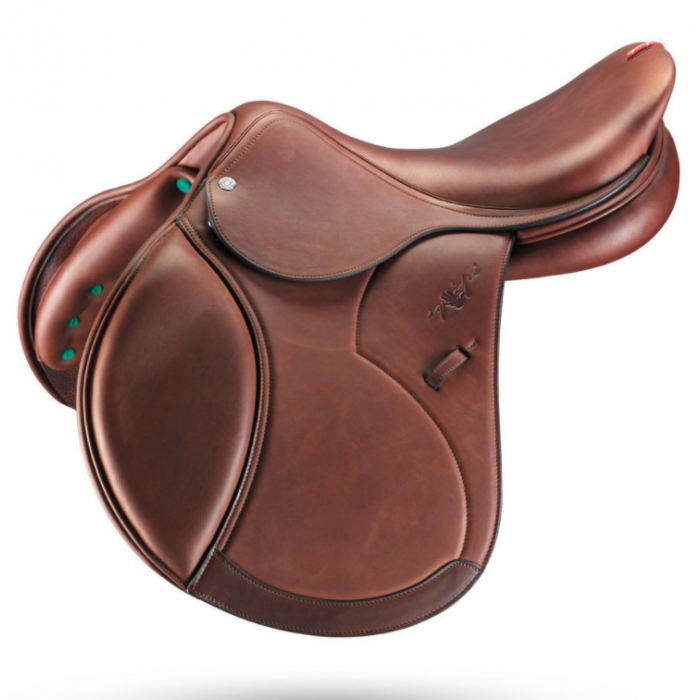Horse Saddles: A Complete Guide to Horseback Riding and Choosing the Ideal Saddle
Saddles are fundamental elements in horseback riding, ensuring comfort and safety for both the horse and the rider. Each equestrian discipline requires a specific type of saddle to optimize performance and ensure the horse's well-being. This article will explore the different types of saddles available on the market, providing practical tips for choosing the right saddle based on the discipline practiced and the characteristics of the horse. Keep reading to discover everything you need to know about horse saddles, from jumping saddles to western saddles, and how to keep your equipment in perfect condition.
What is a Saddle and Why is it Important?
The saddle is a fundamental accessory in horseback riding, positioned on the horse's back to offer comfort and safety to both the horse and the rider. It is designed to evenly distribute the rider's weight, reducing pressure on the horse and improving control and balance during riding. Saddles such as the English saddle and the Western saddle are chosen based on the equestrian discipline and the horse's conformation. A well-fitted saddle is essential to prevent injuries.
What are the Different Types of Saddles for Horseback Riding?
There are several types of saddles, each designed for specific equestrian activities. Among the most common are:
- English Saddle: Used for disciplines like dressage, show jumping, and flatwork. It is characterized by a more or less deep seat and leather flaps to improve the rider's position.
- Western Saddle: Ideal for Western riding, including activities like reining, cow horse, barrel racing, and trail riding. It has a wide seat and a sturdy design.
- Jumping Saddle: Designed for show jumping, it allows a forward posture to maintain balance during jumps. Its structure is intended to provide grip and stability.
- Dressage Saddle: Used for dressage, it offers a deep seat to allow precise control of the horse's movements.
- Pony Saddles: Specially designed for smaller horses like ponies, they ensure comfort and safety for young riders.
How to Choose the Right Saddle for Your Equestrian Discipline?
The choice of saddle depends primarily on the discipline you intend to practice. Here are some key considerations:
- For Dressage: A dressage saddle with a deep seat is ideal, as it allows an upright position and close contact with the horse.
- For Show Jumping: The jumping saddle must offer flexibility and stability to allow smooth movements during jumps.
- For Western Riding: A Western saddle with a wide seat and robust construction is essential to ensure comfort during long rides.
The horse's conformation is another crucial factor; for example, a high wither requires a saddle that does not put excessive pressure on this area. The saddle should also be comfortable for the rider, providing maximum comfort and support during training or competition.
What Materials Are Used for Saddles and What Are Their Advantages?
Saddles can be made from different materials, each with specific advantages:
- Leather: Leather saddles are valued for their durability, comfort, and elegant appearance. High-quality leather is particularly resistant to wear and can last many years if properly maintained.
- Synthetic: Synthetic saddles are lighter and require less maintenance than leather. They are often preferred by beginners or those who ride occasionally.
What is the Difference Between a Western Saddle and an English Saddle?
The main difference between a Western saddle and an English saddle lies in their use and design:
- Western Saddle: Primarily used for work and long-distance riding, such as trail riding. It has a sturdier structure and a wide seat.
- English Saddle: Designed for classic disciplines such as dressage and show jumping. It has a lighter structure, with different types of flaps depending on the discipline practiced.
When to Choose a Leather Saddle and When to Choose a Synthetic Saddle?
The choice between a leather saddle and a synthetic saddle depends on personal preferences and budget:
- Leather Saddle: Ideal for those seeking high quality and durability. Leather saddles offer a classic look and are perfect for dressage, jumping, and other disciplines where precision and contact are essential.
- Synthetic Saddle: More affordable and easier to maintain, the synthetic saddle is a practical choice for beginners or casual riders.
Where to Buy the Best Saddles for Horseback Riding: Online or In-Store?
You can purchase a saddle either online or at physical saddle shops. Buying saddles online allows you to compare different brands and models from the comfort of your home, often benefiting from free shipping and discounted prices. However, trying the saddle in a physical store ensures that it fits both the horse and the rider perfectly. Equitime saddle shop offers personalized saddle fitting consultations.
How to Take Care of Your Leather Saddle?
Maintaining a leather saddle is essential to prolong its life. After each use, the saddle should be cleaned with a damp cloth to remove dirt and sweat. It is important to regularly apply oil and grease to keep the leather soft.
What Accessories Are Necessary to Complete Your Horse's Equipment?
Besides the saddle, there are various accessories that are crucial for a comfortable equestrian experience:
- Stirrups and Leathers: Essential for ensuring safety and support.
- Girth: To keep the saddle securely in place.
- Saddle Pad:
.png)
.png)





















